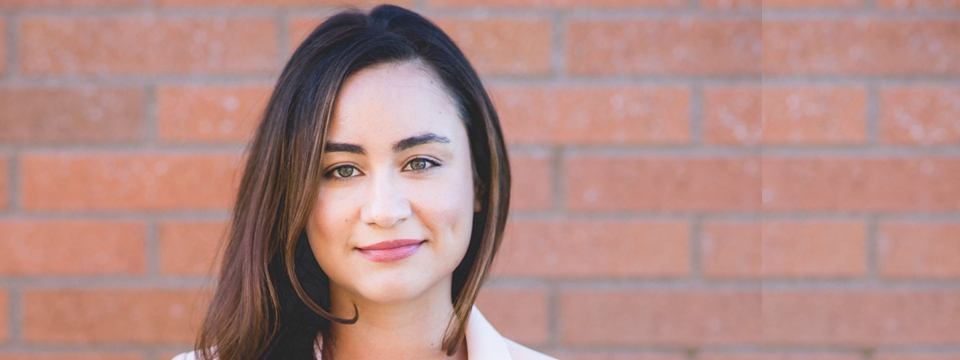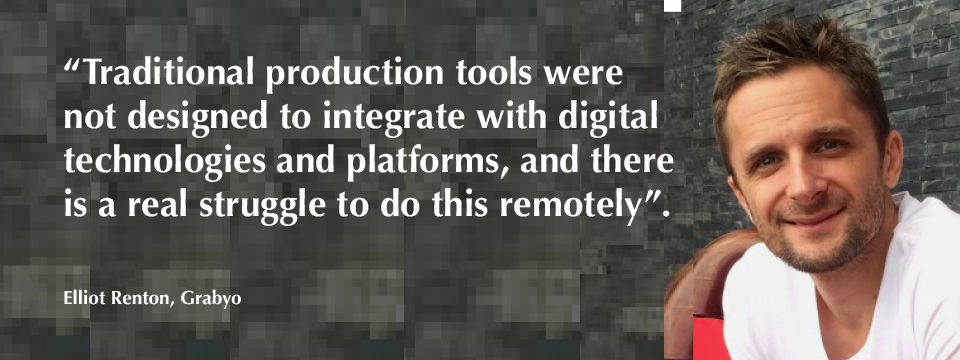
Not that any of us has a whole lot of choice and barring the few mortifying web-conferencing etiquette mishaps, virtual life seems to be turning out a whole lot better than anyone might have imagined in the early days of Covid-19 containment measures.
Execs across the industry are talking about "comfort of their own homes", expanding opportunities of not being tied to physical presence, the things they're learning about communicating in virtual environments, building out tools to supplement video conferencing, more effective communication with an acquisitions community that is increasingly acquiring rights all year round, and being able to reach out to and include audiences that were previously unable to come and sit in the studio.
Tech companies are also having different kinds of conversations with broadcasters and producers being forced to swap location-based set-ups for remote practices and adopt cloud-based systems.
"While nothing will ever beat face-to-face time with our clients, the virtual showcase provided an excellent and flexible option to still be able to do a deep dive into our latest content," said Augustus Dulgaro, ITV Studios' Global Distribution EVP for Asia Pacific sales & distribution, days after he took his first Tokyo Showcase virtual in the early days of Covid-19 movement controls.
The virtual event offered a translated online catalogue introduced in Japanese, and the option to choose videos in Japanese. Clients were able to select which videos they wanted to watch in Japanese at the same time.
Outside of the showcase environment, distributors are tapping every tech platform available to them – Zoom, Skype, Whatsapp, whatever... – in order to connect. Online trading platforms, such as Vuulr, have also taken on a new significance.
In the weeks following the cancellation of this year's Mip TV market, scheduled to take place in Cannes in April, digital alternatives were fast tracked in a big way.

"No one misses running from one side of the Palais to the other!," says Caracol TV's international sales director, Estefania Artega, who rolled out a "let's go virtual" campaign very shortly after Reed Midem pulled the plug on Mip TV 2020.
But while the "focus and the extra time" of virtual meetings online is lovely, the virtual universe deprives distributors of the opportunity to show a potential buyer a screener and sense their reactions up close, she says.
It’s exciting to show a screener of something new in person," Artega says, adding: "You can sense their reactions and see their facial expressions. Virtually the experie...
Not that any of us has a whole lot of choice and barring the few mortifying web-conferencing etiquette mishaps, virtual life seems to be turning out a whole lot better than anyone might have imagined in the early days of Covid-19 containment measures.
Execs across the industry are talking about "comfort of their own homes", expanding opportunities of not being tied to physical presence, the things they're learning about communicating in virtual environments, building out tools to supplement video conferencing, more effective communication with an acquisitions community that is increasingly acquiring rights all year round, and being able to reach out to and include audiences that were previously unable to come and sit in the studio.
Tech companies are also having different kinds of conversations with broadcasters and producers being forced to swap location-based set-ups for remote practices and adopt cloud-based systems.
"While nothing will ever beat face-to-face time with our clients, the virtual showcase provided an excellent and flexible option to still be able to do a deep dive into our latest content," said Augustus Dulgaro, ITV Studios' Global Distribution EVP for Asia Pacific sales & distribution, days after he took his first Tokyo Showcase virtual in the early days of Covid-19 movement controls.
The virtual event offered a translated online catalogue introduced in Japanese, and the option to choose videos in Japanese. Clients were able to select which videos they wanted to watch in Japanese at the same time.
Outside of the showcase environment, distributors are tapping every tech platform available to them – Zoom, Skype, Whatsapp, whatever... – in order to connect. Online trading platforms, such as Vuulr, have also taken on a new significance.
In the weeks following the cancellation of this year's Mip TV market, scheduled to take place in Cannes in April, digital alternatives were fast tracked in a big way.

"No one misses running from one side of the Palais to the other!," says Caracol TV's international sales director, Estefania Artega, who rolled out a "let's go virtual" campaign very shortly after Reed Midem pulled the plug on Mip TV 2020.
But while the "focus and the extra time" of virtual meetings online is lovely, the virtual universe deprives distributors of the opportunity to show a potential buyer a screener and sense their reactions up close, she says.
It’s exciting to show a screener of something new in person," Artega says, adding: "You can sense their reactions and see their facial expressions. Virtually the experience may not feel as exciting or in many cases they are screening it on their own."
Broadcasters in Asia are finding their own way around Covid-19 limitations.
In Hong Kong, Television Broadcasts Ltd (TVB) has, for instance, shifted its annual Miss Hong Kong Pageant online for the first time, and is promising a totally transformed experience. Organisers told media at the end of April that the online option opened up a wealth of opportunity – including global participation – that was never available to the on-ground event. Details are still being finalised.
Given the uncertainty of what the new normal is going to look like, where does the virtual connection process sit on distributors' priority lists going forward?
"There is no doubt that we will continue to be more reliant on technology than ever before and are prepared to adapt to what these changes could bring," Artega says, adding that this "is an opportunity to evolve and be creative when it comes to how we do business. I believe it will be positive, tech will allow us to streamline and work cross-functionally in a more efficient manner".
Asked what he might do differently in the next virtual showcase, Dulgaro says he would like to give clients the ability to download videos to watch offline after the event, empower them to indicate which shows they like, and also introduce a chat facility during the online screenings "so we can look to answer any immediate questions they have whilst viewing".
It's one of a growing list of demands tech vendors are facing as clients and potential clients kick the tyres of digital vehicles they hope will take them into a post-pandemic thriving future.
Meanwhile, there's much scrambling for business continuity, which means, among other things, forcing companies everywhere to come to grips with cloud-based systems. And, as a result, forcing them to confront their now-largely-redundant commitments to the old and the tried-and-tested infrastructure.

Grabyo's senior director and APAC head, Elliot Renton, highlights off-the-charts demand for remote "at home" workflows running from creating, editing to broadcasting across news, entertainment and sports.
"We are testing and trialing new formats across Asia as we speak," he says.
"One of the biggest challenges that broadcasters face is transitioning from a hardware-based, and therefore location-based, production set-up," he says, adding that "traditional production tools were not designed to integrate with digital technologies and platforms and there is a real struggle to do this remotely".
Even if moving into the cloud is a must, paradise is still a way off.
Renton talks about feature limitations for cloud-based production. "These platforms are new and have focused on providing the essential video production tools for live and VOD with flexibility and scalability at their core. Now, platforms are working to catch up with the extensive capabilities of traditional production hardware and software," he says.
Remote production also throws up the challenge of communication across the production team.
"Teams must again rely on connectivity to ensure they can communicate as they no longer can speak to one another across a physical control room," Renton says.
All this requires reliable broadband... a challenge in some parts of Asia.
Ultimately though, the new normal for the broadcast industry looks a whole lot more flexible, scaleable and practical than before because of super-fast-tracked digital tech adoption.
"Overall, this pandemic will make broadcasting more inter-connected and scalable than ever before," Renton says.
Perhaps the biggest difference between now and before is the tone of conversations being had online compared to pre-Covid.
"The tone feels more lighthearted," Artega says. "Of course, business is important, but these days connections feel more genuine," she adds.
The reason has a lot to do with the pandemic. "During these trying times we need to remember that we are all human and we need to be supportive," she says, adding: "We learn a bit more about one another and continue to build trustworthy partnerships that allow us to be more flexible with our business terms and negotiations".























